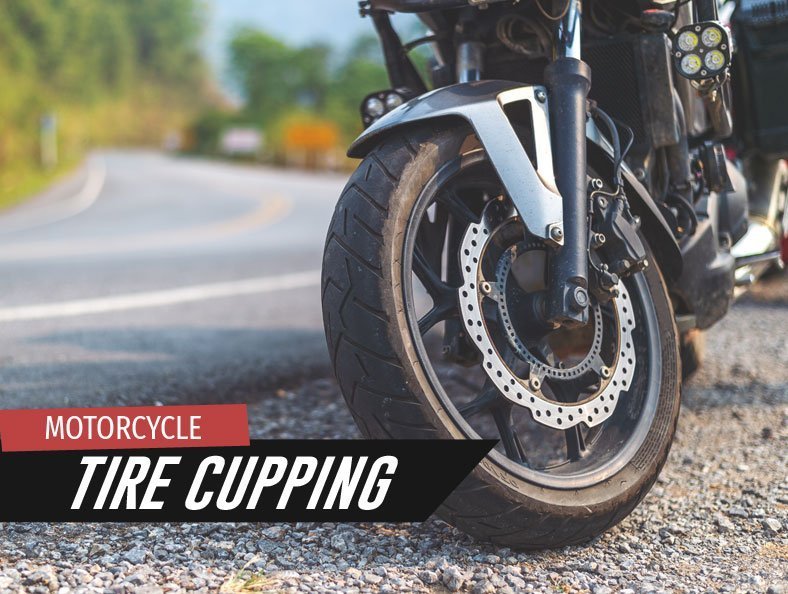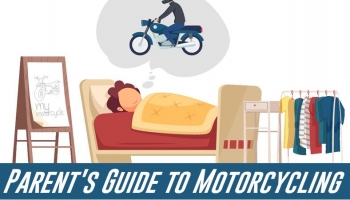Why Do Motorcycle Tires Cup? Is it Dangerous?

Have you ever noticed cupping on your tires? It’s a normal wear pattern on tires following the tread pattern.
However, this doesn’t mean there’s anything wrong with your suspension parts. On the contrary, it shows your tire is gripping the road as you make turns.
Cupping shows up within the side wear bands, and it requires immediate attention. Keep in mind that this is a common occurrence and there’s very little you can do to prevent it.
Continue reading to learn more about it and how to deal with it properly. We’ll discuss some of the most frequently asked questions as well.
What is Tire Cupping?
It is an uneven tear on tires usually in patches of 3-4 inches across. It’s somewhat easy to notice, but it’s also often confused with other types of tire wear. Make sure to inspect your tires to figure out if it’s indeed cupping that you’re dealing with.
In most cases, it happens due to tire damage. The best way to identify the issue is by running your hand across the tire to feel the uneven patches.
Reading Tire Tread
Wear patterns different from rider to rider since we all have different riding habits. For this reason, you can tell a lot by reading the tire tread. It tells you which side the rider likes to lean on more and other such things.
If you have a high spot on the outside of the tread, it most likely means that you lean over quite frequently.
Also, braking leaves a high spot at the back of the tread which you can see when it touches the ground. You’ll notice a high spot on the outside rear if you usually corner and brake at the same time.
Steps to Keep Tires From Cupping
As we mentioned, this is somewhat normal and tends to happen to the best of us. A few things can help the matter a bit although there’s not much you can do about it in general.
Choose a tire with a harder rubber compound as it makes it easier for the treat to stay rigid. Also, consider a more triangular tread pattern, since square and straight ones tend to develop high spots.
Another thing you should do is try not to brake or corner as hard. You should also keep the inflation pressure as specified by the manufacturer.

Front Versus Rear Tire Wear
As we explained, reading cupping on your front tire is rather simple. However, the rear tire handles different types of stresses, so it isn’t as easy to read.
It doesn’t take on much stress from leaning, but it has both acceleration and braking stresses. For this reason, you can read both tires, but you don’t always have to.
In other words, it might be better to read the front one only as it tells about the rider’s habits a bit better. Rear tire wear might not offer such precise details.
Frequently Asked Questions
Is "scalloping" the same thing?
Scalloping is a term used to describe cupping. Essentially, it means the same thing, but since the latter term is commonly known, the term scalloping isn’t used as much.
Conclusion
Scalloping is nothing to be afraid of though it shouldn’t be overlooked or ignored. Make sure to inspect your tires for any signs of it from time to time.
Also, deal with it appropriately as soon as you notice it regardless of whether it’s your front or rear tire. Cupping isn’t difficult to deal with, but it makes tires unsafe. For this reason, you shouldn’t wait for any longer from the moment you notice it.
This is because the damage progresses, and at some point, it will escalade possibly putting you in danger.
Keep an eye out for symptoms and implement some of the steps to prevent scalloping to some extent.






